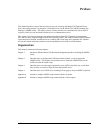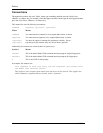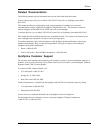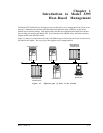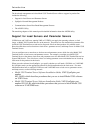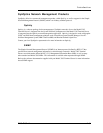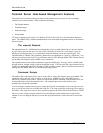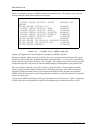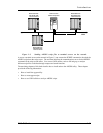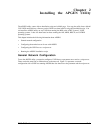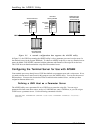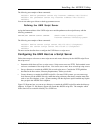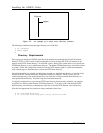
Introduction
1 -4 893-769-A
Terminal Server Host-based Management Features
The terminal server software package provides several features that you can use on a host to manage
terminal servers on the network. These include the following:
• The Csportd daemon
• Command scripts
• Dial-back scripts
• Nested menus
The Software Management Guide for the Model 3395/3395A Terminal Server describes these features in
detail. The APGEN utility, another communications server host-based management feature, is described in
the next section.
The csportd Daemon
The csportd daemon is a UNIX host-based daemon that you use to make connections to a port and transfer,
or pipe, data to and from that port. You can use this connection to send a file or user data to a port, for
printing to PostScript printers, or as a permanent connection between a host and a specific port. The
csportd daemon is a Model 3395-proprietary daemon that you implement as a utility at a UNIX host. You
can use csportd in place the of the tsvr_ptyd daemon and tsvr_filter, although Model 3395 Terminal Servers
still includes these features in the terminal server software kit.
The csportd daemon comes with an installation script and a MAN page. You copy it from a UNIX media
kit onto the host, and then install it with the installation script. You can install the csportd daemon on any
UNIX host running BSD and AT&T System V UNIX operating systems, and has also been tested on hosts
running the AIX, MIPS, HP/UX, and ULTRIX operating systems.
Command Scripts
The Model 3395 script feature allows you to create a file, or script, that contains one or more Model 3395
commands and to store the script on a host, or script server. UNIX hosts and VAX/VMS hosts can
function as command script servers. When you execute the SCRIPT command on the terminal server, the
host downloads the script to the terminal server. The command processor on the terminal server
automatically executes the commands.
You can configure a terminal server port to request the script file automatically when a user logs on to the
port, or you can allow the user to request the script file. You create script files on the script server using a
text editor. The script server can be a host system that supports the Trivial File Transfer Protocol (TFTP).
The way you use scripts to manage terminal server ports depends on the content of the script file and
whether or not you configure the port to execute the script automatically or allow the user to execute the
script.





